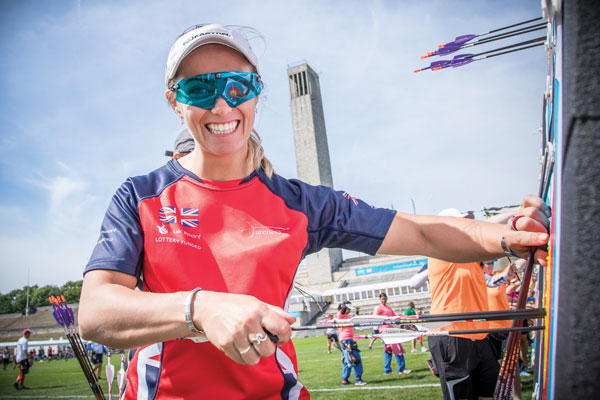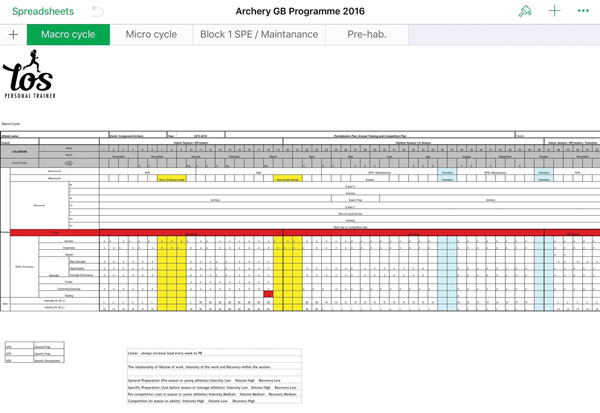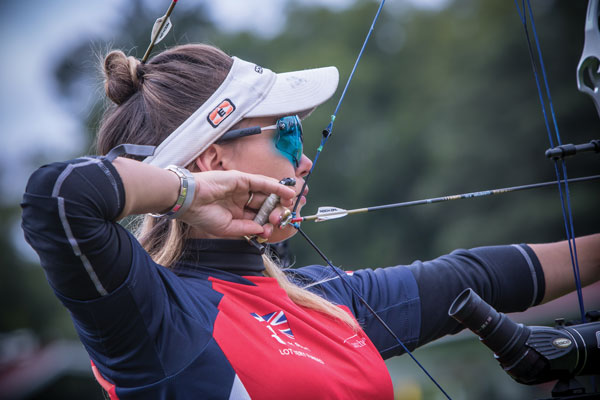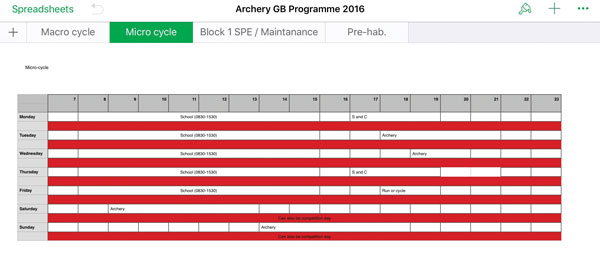Lucy O’Sullivan starts her year with an analysis of the previous one in order to get the best from the coming season – here’s how she does it

Now is a good time of year to analyse how you felt about your performance last season
Now is the perfect time of year for a round up of the previous year’s events. The best thing to do is keep a note somewhere of what shoots you did, and how you performed, and you can then look back at them in terms of outcome goals (that is, did you win) or a task goal (did you shoot 72/72 ‘perfect’ shots).
I personally keep a little spreadsheet of the year, what events I did, how much they cost me, and how I performed. It may also be good to note things such as weather conditions – there are some grounds that can be consistently windy or calm year on year, but unless you note this you won’t know, and particularly bad weather can provide some context to a drop in scores. I sometimes jot these notes down straight after the competition, and sometimes I wait until the year end, but either way I end up with a list of what I’ve done and how it went.
Working out what went well
The more experienced ones of you out there will probably keep a shooting journal or diary, and if you don’t already it’s a good idea to consider. Here, you can note down variables from each training session and competitions, and note the weather conditions, how you felt; tired, awake, stressed, happy, injured. What bow and arrow setup you used (and what worked, or didn’t work, of this) even down to how much food you had and how much water you drank.
If this seems like too much, something as simple as writing down you scores or marking your groups on a target face and writing the bow setup may be more for you; you can then take a picture with your phone for your records.

Your evaluation
All of these variables can be used to help create a training manual for you as to what worked well and what didn’t. For example, if you were tired for three out of every four shoots you did, and the one day you were not tired, you won, you can safely assume that getting all of your hours of sleep before a competition will help you in 2018.
Another example may be your bow set-up and arrow tuning. If you shot two bad competitions in a row it may not be you – think back to before those competitions: did you change anything? Or did anything move? It is worth noting what happened and then if you notice that your groups went left, for example, and it happens again maybe the same tuning issue is occurring again and you can fix it.

Records of your performance will help highlight what affects you – both positively and negatively
Your stumbling blocks
Personally, I like to use what I learnt in my degree and I often ‘periodise’ my year. Periodisation is the systematic planning of athletic or physical training, and the aim is to reach the best possible performance at the right time of the year. It involves progressive cycling of various aspects of a training program during a certain time. It is also the process of categorising the past into quantified blocks to help the analysis of history.
Basically come January I sit down with a diary and decide what shoots are the most important for me that year. From then on I can work my year around those one or two special shoots, and use the others as practice in the lead up to them.
The picture of a periodised year is one I planed for the GB juniors a few years ago. Periodised years can be split into large and smaller parts called macro (generally a year cycle), meso (generally a few months, such as an indoor or outdoor season) and micro cycles (generally a week).

Now in 2017 I did this; I knew I had the World Championships coming up so my focus was being prepared in October, but this didn’t stop the fact that my season started at the Arizona Cup in April. It was a long, hard year with many national events too, but what have I learnt from it? I have learnt that with long haul travel, I get very tired and I will need to periodise in some downtime after those trips at work and archery to recover from big international events. It could be as simple as missing one UK shoot so that I am not fatigued for a World Cup. But how do I know this? I wrote down how I felt after my 2017 shoots!
So how can you have a successful 2018?
Learn from the past – even if you don’t write a fool-proof diary, it doesn’t matter so long as you know what worked last year and what didn’t! The key is you want to enjoy your archery. If there is a field that you don’t particularly like competing at, don’t go this year. If you know that a certain month at work or school is going to be difficult, plan it in! Write a list of the shoots you really want to go to and do well at and plan your other life commitments around that. This year maybe your new year’s resolution can be to buy and write in a little archery diary so that when things work you can evaluate why they did. Happy shooting in 2018!
This article originally appeared in the issue 122 of Bow International magazine. For more great content like this, subscribe today at our secure online store: www.myfavouritemagazines.co.uk

